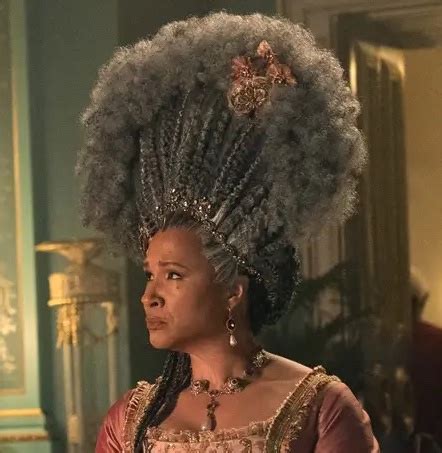Indulge in the captivating world of Queen Charlotte wigs, where history, fashion, and beauty intertwine. From the grandeur of Buckingham Palace to the silver screens of Hollywood, these iconic hairpieces have adorned the heads of royalty and inspired thousands. Join us on a regal journey as we explore the fascinating story behind Queen Charlotte wigs and their enduring legacy in the world of hair.

The Birth of a Royal Fashion Statement
In the 18th century, Queen Charlotte, consort to King George III, sparked a hair revolution that would forever change the landscape of British fashion. Known for her elaborate and towering wigs, she set the standard for the upper classes, who eagerly adopted this new fashion trend.
These wigs, often made from real human hair, were a symbol of status and wealth. The more elaborate the wig, the higher the wearer’s ranking in society. The demand for wigs became so great that London established a wig-making industry that employed over 10,000 people.
Role in Royal Portraits and Pageantry
Queen Charlotte wigs played a crucial role in royal portraits and pageantry. They transformed the appearance of monarchs and courtiers, creating an air of formality and grandeur. The wigs were carefully styled and adorned with jewels, ribbons, and feathers, making them a focal point of official portraits.
Hollywood’s Embrace: Bridgerton and Beyond
In recent years, Queen Charlotte wigs have made a resurgence in popular culture, thanks in part to the smash-hit Netflix series “Bridgerton.” The show’s lavish costumes and attention to historical detail have reignited interest in the wigs of the past.
Hollywood has also embraced Queen Charlotte wigs, using them to create memorable characters in films such as “Marie Antoinette,” “Pirates of the Caribbean,” and “The Duchess.” The wigs have become an essential tool for costume designers seeking to evoke historical accuracy and elegance.
Types of Queen Charlotte Wigs
Queen Charlotte wigs traditionally come in two main types:
- Full-Bottom Wig: Made from a full head of hair, often curled or waved, and worn on the shoulders.
- Half-Bottom Wig: Worn only in the front, with the natural hair showing at the back. This was a more casual style, suitable for everyday wear.
In addition to these traditional styles, modern wig-makers have created an array of contemporary designs inspired by Queen Charlotte’s wigs.
Wig-Making Techniques and Materials
Traditional Queen Charlotte wigs were meticulously handcrafted using methods that have been passed down through generations. The process involves:
- Carding and Combing: The hair is carded and combed to remove tangles and create a smooth base.
- Lace Weaving: A fine lace cap is made, and the hair is woven through the holes.
- Blocking: The wig is placed on a wig block and styled using heat and molding techniques.
Modern wig-makers may use synthetic hair or a combination of human and synthetic hair to create affordable and long-lasting wigs.
Styling and Maintenance
Queen Charlotte wigs require careful styling and maintenance to maintain their grandeur. Regular brushing, washing, and conditioning are essential. Additionally, the wigs can be styled with curling irons or tongs to create different looks.
To preserve the wig’s shape and structure, it should be stored on a wig stand when not in use. Regular check-ups with a wig stylist are recommended to ensure proper maintenance and prevent any damage.
Table 1: Evolution of Queen Charlotte Wigs
| Period | Style | Purpose |
|---|---|---|
| 18th Century | Full-Bottom and Half-Bottom Wigs | Symbol of status and wealth |
| 19th Century | More modest wigs | Fashionable for all classes |
| 20th Century | Used for historical reenactments and pageantry | |
| 21st Century | Resurgence in popularity, inspired by “Bridgerton” | Used in film and fashion |
Table 2: Comparison of Natural Hair Wigs and Synthetic Hair Wigs
| Characteristic | Natural Hair Wigs | Synthetic Hair Wigs |
|---|---|---|
| Appearance | More natural-looking | Less natural-looking |
| Cost | More expensive | More affordable |
| Durability | Last longer | Less durable |
| Heat Styling | Can be heat-styled | Cannot be heat-styled |
| Maintenance | Requires regular washing and conditioning | Requires less maintenance |
Table 3: Styling Techniques for Queen Charlotte Wigs
| Technique | Description | Effect |
|---|---|---|
| Pin Curls | Hair is wrapped around pins and left to set | Creates loose, soft curls |
| Heat Styling | Using a curling iron or tongs | Creates defined, polished curls |
| Backcombing | Teasing the hair at the roots | Adds volume and lift |
| Braiding | Braiding sections of hair | Creates intricate styles with added texture |
Table 4: Strategies for Choosing the Perfect Queen Charlotte Wig
| Factor | Considerations |
|---|---|
| Face Shape | Choose wigs that flatter your facial features |
| Hair Color | Match the wig color to your natural hair |
| Lifestyle | Consider your daily activities and the suitability of the wig’s style |
| Budget | Determine a realistic budget for purchasing a quality wig |
| Wigmaker | Look for experienced and reputable wigmakers who can create custom wigs |
Conclusion
Queen Charlotte wigs have transcended centuries, embodying both historical grandeur and contemporary fashion. From the royal courts of the past to the vibrant world of entertainment, these wigs continue to inspire and enchant. As we delve deeper into the world of Queen Charlotte wigs, may we appreciate the artistry and craftsmanship that goes into their creation and embrace the transformative power of these regal hairpieces.
